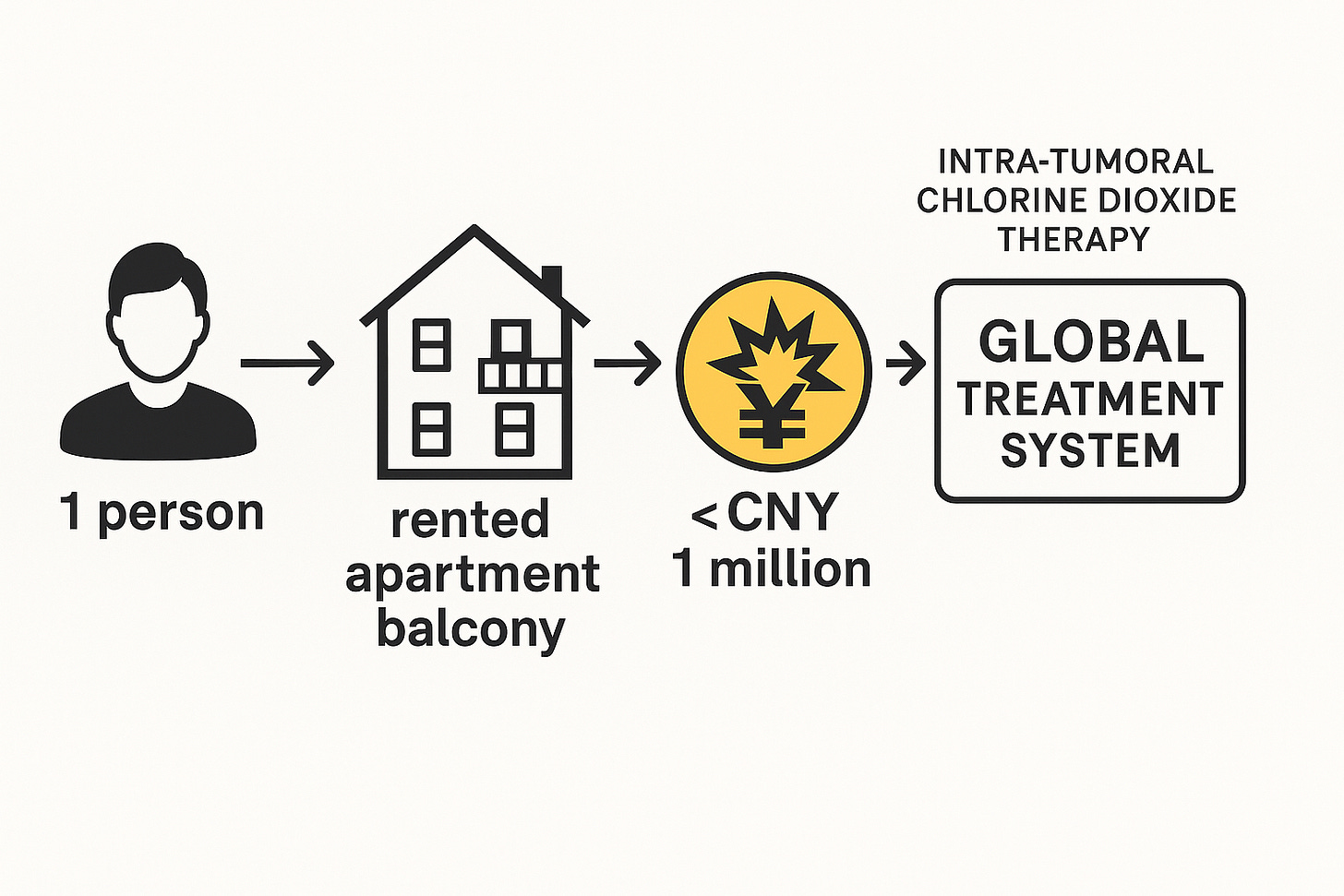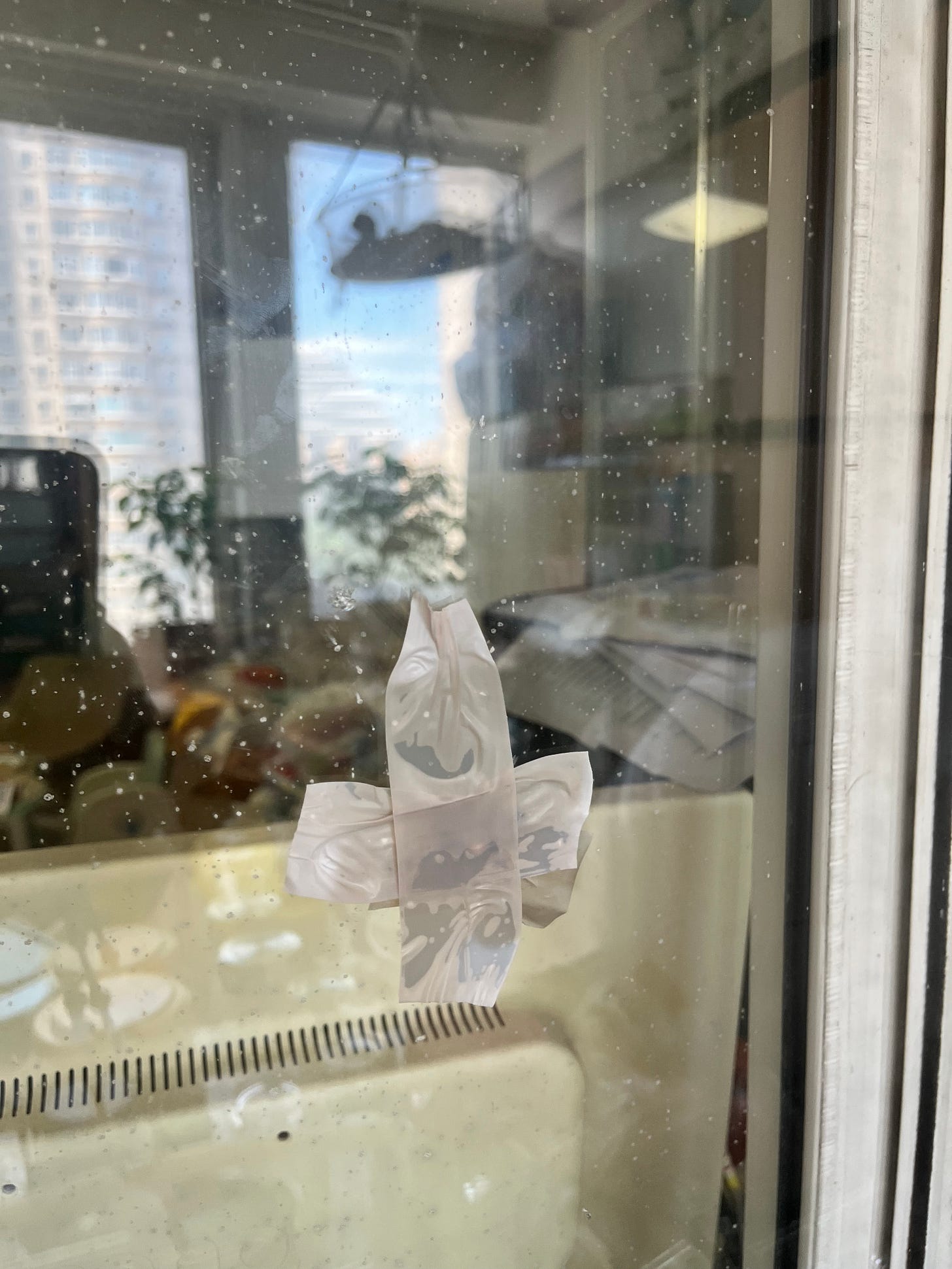The Blast That Didn’t Kill Me: A Story of Chlorine Dioxide, Survival, and Destiny
February 2025. A night I will never forget.
⸻
Late that evening, I was on the balcony of my rented apartment, preparing what should have been a routine experiment: the in-situ production of chlorine dioxide using sodium chlorite and citric acid. These experiments were part of my ongoing effort to develop a safe, stable injectable formulation—something that could one day be used to treat cancer tumors directly. I was alone, except for my three-year-old daughter, who was playing inside the living room, separated from the balcony by glass doors.
I had done this dozens of times. But that night, I made a fatal mistake:
I forgot to open the pressure relief valve.
Inside a 250 mL high-borosilicate glass container, a high-temperature reaction was underway. Sodium chlorite and citric acid were reacting vigorously, and I watched for a few minutes. Then, as I reached forward and turned the valve—
Boom.
A violent explosion. My hand was still on the valve. My head was just 50 centimeters away from the detonation point.
Want to read what happened next—and how this event shaped the future of my cancer therapy system?
👉 Subscribe to unlock the full story.
⸻
Shattered Glass, Blinding Yellow
The blast blacked out my vision. Dense clouds of chlorine dioxide burst into my face, filling my eyes, nose, and mouth. I stumbled back into the apartment, rushing to the bathroom to wash out the gas from my eyes and respiratory tract. My lungs were burning.
Later, I would find 4–5 cuts on my upper thigh—shards of glass had pierced through my pants.
But in that moment, I wasn’t worried about myself. I was terrified for my daughter.
She was unhurt, just frightened by the sound and shockwave. The double-layered balcony glass had been violently cracked by the blast impact, but not shattered. All the scattered glass fragments covering the balcony floor came from the exploded high-borosilicate reaction container. Some fragments had shot through a gap into the living room. A fridge standing two meters away, behind me, had a 2-centimeter dent punched into its metal side.
The balcony floor was covered in glittering glass. I should not have survived that blast without major trauma. But I did. Aside from several cuts on my thigh and hand—now bandaged with cartoon plasters—my injuries were surprisingly light. My face, somehow, remained untouched.
⸻
⸻
What Protected Me That Night?
At the time, I didn’t dwell on it. I cleaned up the mess, reassured my daughter, and resumed my work.
But now—months later—under pressure from strange inquiries, fake patients, and a growing number of covert actors trying to understand (or undermine) my invention, I keep remembering that explosion.
Why did I survive?
Why was my daughter protected, even when the glass passed so close?
Why was my face untouched when a blast happened half a meter from my eyes?
Some would call it luck. I no longer believe in luck.
⸻
Three Months Later: I Filed My Patents
That night was not the end of anything. It was the beginning of something else.
Just three months after that explosion, I filed two major patents—one covering a stabilized, high-concentration chlorine dioxide injection; another detailing a self-pressurized, sealed production system. Both were designed to prevent exactly the kind of instability that nearly killed me.
The explosion forced me to rethink everything—reaction kinetics, pressure control, gas absorption, storage pH. My system evolved rapidly. And now, it is the foundation of a safe and scalable therapy that can change cancer treatment around the world.
⸻
A Therapy, A System, A Mission
I believe intratumoral chlorine dioxide therapy is not just an invention—it is a system, a philosophy, and a mission. The fact that I survived that blast is not proof of its validity, but it does make me believe something larger is at work. Some kind of selection. Some kind of obligation.
This is not about money, or fame. It is about building a new therapeutic architecture—one that is strong, self-proving, and independent of broken institutions.
⸻
What the Explosion Taught Me
• Scientific breakthroughs are not born in sterile labs. Sometimes, they emerge from danger, pain, and survival.
• Systems must be built not just for efficacy—but for safety and sustainability.
• If you survive a near-death event and keep going, it may not be an accident. It may be your calling.
And so I continue. With stronger tools. With clearer principles. And with deeper resolve than ever.
Because I believe this therapy can save lives.
Because I survived to build it.
—
Written by Xuewu Liu
Inventor, Intra-Tumoral ClO₂ Therapy









Wow! Thank God your sweet little one was okay! And thank God you are too! So many people are so grateful that you are okay and have persisted with your dream (especially me)!
God bless you, sir! Your persistence in seeing your vision through to reality is inspiring!